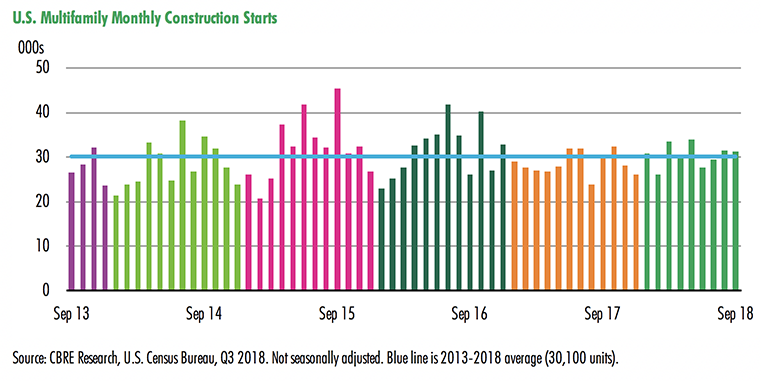From: Connect Commercial Real Estate
Date: October 23, 2018
Multifamily development permits dropped 9.3% last month, but researchers at CBRE say that’s a favorable sign for future market balance. They point out that current construction activity is still at high levels, however, given the reduced permitting, a slowdown in both starts and under-construction totals can be expected in 2019.
U.S. multifamily demand remains healthy, writes CBRE in its latest U.S. MarketFlash. For the year ending Q2 2018, total net absorption was at its highest level in more than 15 years, according to CBRE Econometric Advisors data.
Despite high levels of construction activity, vacancy rates are only inching up slowly due to strong demand. The demand outlook is also favorable based on sustained economic growth, low levels of home buying and multifamily renters staying in rental units for longer periods.
September’s multifamily permitting activity totaled 351,000 units, according to the U.S. Census Bureau. This was the lowest rate since March 2016’s 343,000 units, and was also well below (-15.9%) the 2018 year-to-date average of 417,000 units.
CBRE writes, this is certainly good news for most of the multifamily industry, particularly owners and investors hoping for reduced deliveries that would lead to more market balance in the next few years.
The under-construction total, which represents deliveries over the following two years or so, will begin to edge down when the lower levels of units permitted translates into fewer starts. That trend likely will become apparent in 2019, notes CBRE.

Read Full Article: https://www.connect.media/drop-in-permits-signals-promise-of-future-multifamily-market-balance/
Contact Us for More Information
"*" indicates required fields



